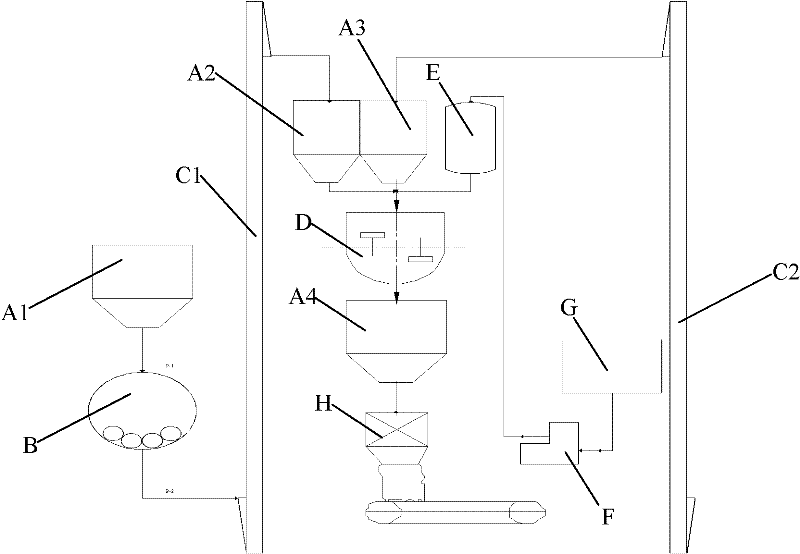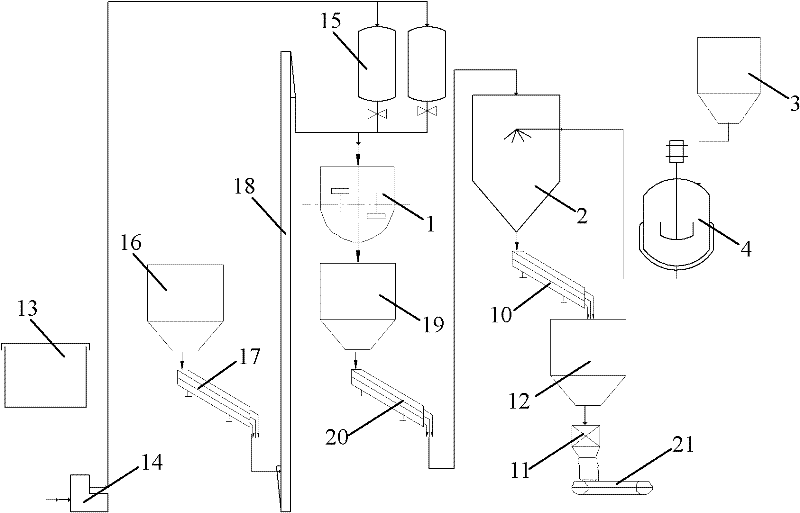Protective feed acidifier and processing method thereof
A feed acidifier and protective technology, applied in the field of protective feed acidifier and its processing, can solve the problems of low melting point effective components, affecting the secretion of gastric acid and pepsin, reducing the nutritional titer in the feed, etc. And lost, guaranteed health and integrity, cleverly designed unique effects
- Summary
- Abstract
- Description
- Claims
- Application Information
AI Technical Summary
Problems solved by technology
Method used
Image
Examples
example 1
[0084] Acidifier formula: 40% (by weight) phosphoric acid (commercially available, food grade), 12% (by weight) lactic acid (commercially available, food grade), 18% (by weight) stearic acid (commercially available, food grade) , And 30% (weight) of 20-60 mesh white carbon black.
[0085] The processing is carried out according to the above processing method, wherein the liquid acid is phosphoric acid and lactic acid, the adsorbent and auxiliary materials are white carbon black, and the coating material is stearic acid.
example 2
[0087] Acidifier formula: 41% (by weight) phosphoric acid (commercially available, food grade), 20% (by weight) lactic acid (commercially available, food grade), 13% (by weight) stearic acid (commercially available, food grade) , And 26% (weight) of 20-60 mesh white carbon black.
[0088] The processing is carried out according to the above processing method, wherein the liquid acid is phosphoric acid and lactic acid, the adsorbent and auxiliary materials are white carbon black, and the coating material is stearic acid.
example 3
[0090] Acidifier formula: 50% (by weight) phosphoric acid (commercially available, food grade), 13% (by weight) lactic acid (commercially available, food grade), 12% (by weight) stearic acid (commercially available, food grade) , And 25% (weight) of 20-60 mesh white carbon black.
[0091] The processing is carried out according to the above processing method, wherein the liquid acid is phosphoric acid and lactic acid, the adsorbent and auxiliary materials are white carbon black, and the coating material is stearic acid.
PUM
 Login to View More
Login to View More Abstract
Description
Claims
Application Information
 Login to View More
Login to View More - R&D Engineer
- R&D Manager
- IP Professional
- Industry Leading Data Capabilities
- Powerful AI technology
- Patent DNA Extraction
Browse by: Latest US Patents, China's latest patents, Technical Efficacy Thesaurus, Application Domain, Technology Topic, Popular Technical Reports.
© 2024 PatSnap. All rights reserved.Legal|Privacy policy|Modern Slavery Act Transparency Statement|Sitemap|About US| Contact US: help@patsnap.com










